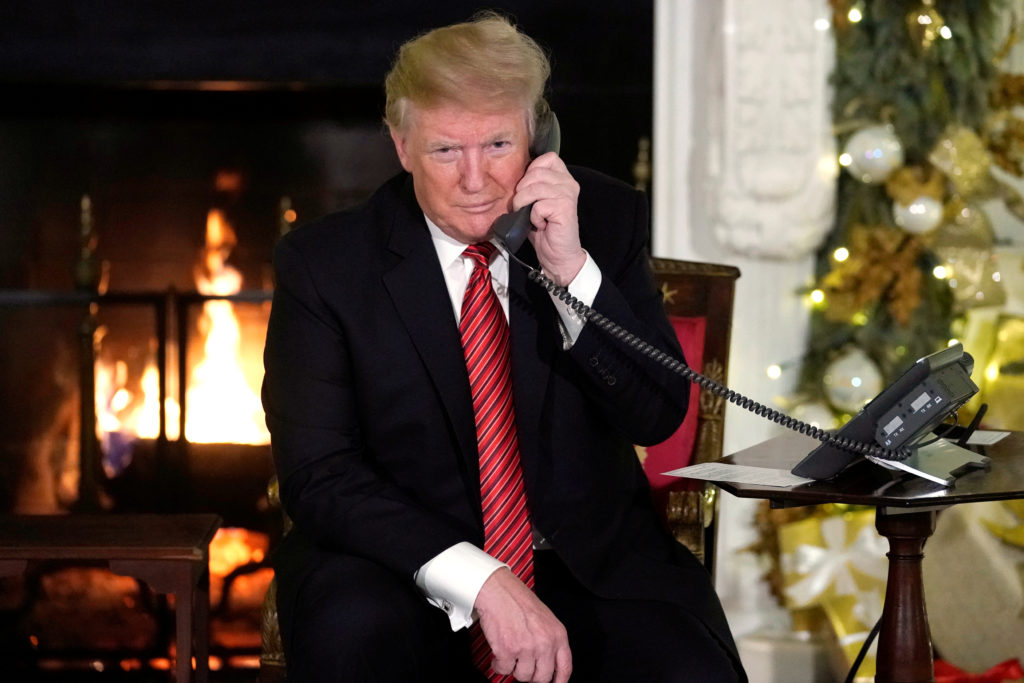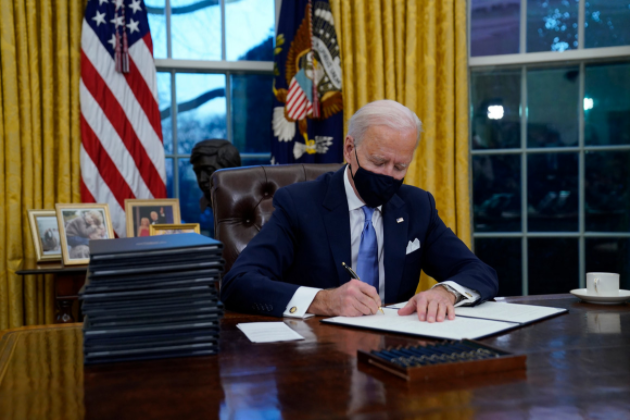
This article is more than
4 year old
President Joe Biden will sign 10 more executive orders on Thursday aimed at ramping up Covid testing and vaccinations, tightening enforcement of workplace safety rules and funneling more federal dollars to states struggling through the pandemic and economic crisis.
After assailing Donald Trump's coronavirus response as a candidate and throughout the transition, Biden will lay out in greater detail what he'll do differently as cases and hospitalizations continue to rise, with the U.S. death toll expected to reach half a million people within weeks.
“For almost a year now, Americans could not look to the federal government for any strategy, let alone a comprehensive approach, to respond to Covid, and we’ve seen the tragic costs of that failure,” Jeff Zients, Biden’s coronavirus coordinator, told reporters on a Wednesday night call, adding that Biden’s plan will “fundamentally change course of pandemic” and “get us back to our lives and loved ones.”
This next wave of executive actions comes after Biden, hours after being sworn in, signed an order requiring face coverings and social distancing on federal property and canceled the Trump administration’s attempt to withdraw the U.S. from the World Health Organization. But while many of the latest moves flex the executive branch's power, several depend on cooperation from Congress or governors.
“We do need Congress to act and act quickly,” Zients said, calling for passage of the $1.9 trillion Covid relief bill Biden unveiled last week. “We will only overcome this pandemic together. It’s the only way out of the darkness.”
Topping Biden's list is an order invoking the Defense Production Act to increase the supply of all the materials needed to get the vaccines into arms and ramp up testing. The order covers N95 masks and other protective gear, testing machines, rapid test kits and syringes capable of maximizing the amount of Covid vaccine that can be extracted from vials.
Tim Manning, a former FEMA official who will be Biden’s Covid-19 supply coordinator, said he sees the DPA as just one of many tools the new administration can use going forward.
“We’ll do whatever we need to do to ensure that we have an adequate supply of vaccine,” he said.
Biden will also order the creation of a pandemic testing board, modeled on President Franklin Roosevelt’s War Production Board, that will be tasked with expanding testing capacity, particularly in schools. Officials said Biden will also "clarify” health insurance companies’ obligation to cover Covid-19 testing, a sign the new administration may reverse a policy that has allowed insurers to refuse to cover testing of asymptomatic individuals for public health surveillance or back-to-work programs.
Other executive actions will create a public dashboard with real-time national and state-level data on cases, testing, vaccinations and hospital admissions, and impose a mask-wearing mandate on airplanes and other forms of interstate transportation. The administration also will deploy FEMA to set up 100 community vaccination sites in the next 30 days.
President Joe Biden is promising a complete reversal of the problems that plagued the Trump administration. But one is sure to stick around: the coronavirus pandemic.
Biden will also restore full federal funding for the National Guard's pandemic work — reversing a Trump administration decision last summer to cut most states’ funding by 25 percent. The same order will also approve more FEMA funding to help states reopen schools — reimbursing states for items like masks for teachers — and make more FEMA resources available to Native American tribes.
On workplace issues, another Biden order aims to strengthen enforcement against employers who put their workers at risk of contracting Covid-19, directing the Occupational Safety and Health Administration to put out stronger guidance around virus prevention measures and go after “the worst violators.” But while labor groups have pressed Biden for months to order OSHA to create an temporary emergency standard for workplaces during the pandemic, the order will only instruct the agency to determine whether or not such a move is necessary.
As more states report having to cancel vaccine appointments due to shortages and uncertainty about future shipments, Biden’s team has also not yet indicated how it plans to allocate vaccines going forward. Zients indicated the administration would not maintain the Trump administration’s recently implemented policy to distribute vaccines to states based on how fast they administered them — penalizing states that are slower — but also wouldn't commit to return to the original system of allocating shots based on each state’s total population.
“We are not looking to pit one state against another. Our system will have equity as the guiding principle,” he said. “We do not envision punishing states.”
Zients also said repeatedly that due to obstruction and poor information sharing during the transition, he and other Biden officials are only just now getting a full picture of how much vaccine supply the government has on hand, how much they’ve already promised to send and to where, and when they can expect more.
“The cooperation, or lack of cooperation from the Trump administration has been an impediment,” he said. “We don’t have the visibility we would hope to have into supply and allocation.”
Biden’s Covid response team members also made clear that they're concerned about reports of stark racial disparities in who is getting the first vaccines — and plan to take steps to make sure people of color don’t get left behind. While one of the new orders creates a Covid-19 Health Equity Task Force to advise the team on these issues, many of the administration's other proposals to expand the availability of testing, treatment, and vaccines require Congress to approve tens of billions of dollars in new funding.